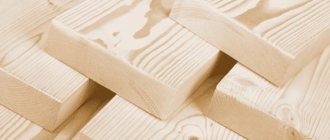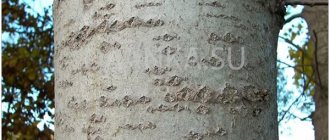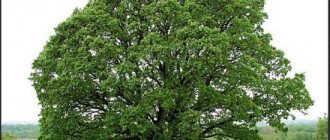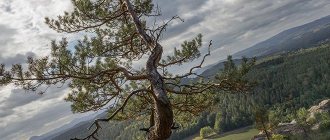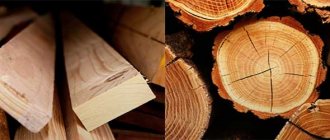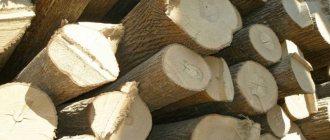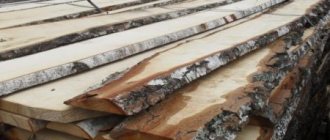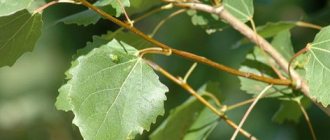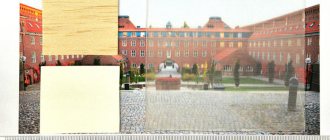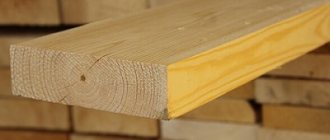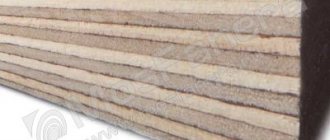Aspen is one of the most common trees around the world. Many fairy tales and legends are associated with it; it has been considered a mystical plant since ancient times. According to Slavic beliefs, devils and other evil spirits lived in aspen groves, and the leaves of the plant trembled at the sight of a devil.
The ancient Greeks believed that the aspen tree grew in the other world.
But despite all the negative indicators, the tree was also famous for its positive side, for example, a bed made of aspen protected the owner from evil, branches of the tree were stuck into the beams of fences - this was considered a talisman, supposedly such a yard would bypass evil spirits, they also fought with evil spirits using aspen stakes. In addition, log houses for wells were made from trunks and it was believed that such a well contained the most delicious and clean water.
Description of aspen
Some sources provide different information about the origin of the name. Some say that aspen comes from the word “blue”, because at the site of the log house the surface acquires a bluish tint, and the body of the trunk itself is white. According to other sources, the name populous tremula in Latin means “trembling man”, and is popularly called the whispering tree, most likely due to the trembling leaves in the wind.
Aspen belongs to the genus of poplars from the willow family, for which it is sometimes called “trembling poplar.” The plant feels comfortable in cool and temperate climates and is found throughout Eurasia. Prefers to grow in mixed, coniferous forests and alone in the steppes, near the ravine, near roads, rivers, and in city parks. Loves moist soil.
The external features of the tree, a photo of which can be seen in the article, can be described as follows:
- Aspen resembles poplar , especially with rounded leaves, with small carved edges, pointed apex, leaf size reaches 7 cm. Petioles are long, flattened. In spring and summer, the color of the leaves is green with a shiny, smooth surface; in autumn they turn yellow, orange and red.
- blooms with catkins, and there are male and female plants. The male earrings are large and long, silver with a red base, while the female ones are green and slightly smaller than the male ones. The flowering period begins before the leaves bloom from March to May; after pollination, a fruit is formed - a seed box 0.5-1 cm in size, the seeds are located inside on fibrous puffs that are carried by the wind.
- The trunk is smooth and high up to 35 m, diameter - 1 m. It grows in single specimens and groups. In spacious steppes or roadside areas, it has rather spreading branches, lushly decorated with green leaves, but in the forest thicket, it is a bit crowded, so the branches are directed upwards towards the sun.
- The bark is light green, silver or light gray. A young plant has a smooth surface, but with age the bark begins to darken and crack, especially in the root area. In this way it is similar to poplar and birch.
- The root system is strong, powerful, goes deep into the ground, which extends the life of the plant. Even after serious fires, the plant can recover with the help of young shoots extending from the root. The average age is 80−90 years.
- The wood is white with a blue tint, the core of the trunk is beige with brown veins.
Selection
Nowadays, science has ways to grow healthy wood. Good results are obtained by removing dry branches through which spores of harmful fungi penetrate. I must say that this work is quite labor-intensive. Old trees are usually infected with fungal diseases, so aspen trees should be cut down immediately after thirty years. To prevent over-aged aspen trees remaining in the forest from producing offspring and becoming breeding grounds for diseases, they must be ringed and a strip of bark removed along the entire circumference of the trunk, right down to the wood.
And, of course, an effective way to obtain healthy trees is through selection, crossing ordinary aspen with rot-resistant forms and with some types of poplars.
Professor A.S. Yablokov, crossing Bolle poplar with aspen, obtained a hybrid with a beautiful pyramidal crown, characterized by rapid growth, frost resistance and resistance to rot. The hybrid was named Yablokov's poplar. By crossing white poplar with Bolle poplar, a pyramidal, very frost-resistant poplar was bred.
Aspen selection is a delicate matter that requires true art. The tiny pistillate flowers of common aspen need to be pollinated with pollen from the staminate flowers of blight-resistant greenbark aspen or poplar. It’s good that pollen is highly resilient and can even be sent by parcel. You need to know how to sow hybrid aspen seeds. They cannot be buried in the ground, like spruce or oak seeds. Slightly noticeable aspen seeds with white fluff fluff are sown on top of ridges of fertile soil, previously well watered. It is necessary that the seeds only lightly touch the ground. After 2 years they are already suitable for planting in a permanent place.
Industrial Applications
If in ancient times the plant was used in magical rituals and there were many superstitions around it, then in the modern world, aspen wood is widely used for industrial purposes. The trunks used to make furniture, plywood, building materials, small household items, kitchen devices and accessories (barrels, cutting boards, rolling pins, hot pads, etc.), decorative items, matches, cellulose, and firewood for stoves.
The bark is used for tanning leather products.
Bee apiaries are installed near aspen groves or clearings. Despite the unusual flowering, aspen is an excellent honey plant; in addition, bees extract glue from its buds, which turns into the building material of honeycombs - propolis.
Use of aspen wood
Although aspen is not considered a good wood for lumber, it has qualities that make it a leader in certain wood applications.
- Aspen has been used for medicinal purposes since ancient times. A bitter tea is prepared from the bark to help cleanse the body and treat urinary tract infections. Compresses from the bark reduce swelling of the joints.
- The most common use of aspen wood is to make matches. Aspen wood is soft, but strong and flame resistant compared to other woods.
- It is often used in the manufacture of cheap furniture. Wood is low in price, however, it is wear-resistant. Processing this wood has a low cost.
- When properly heat treated, aspen can be a good, inexpensive choice for a sauna interior.
- Wood is used in the production of materials for construction, such as veneer, plywood, round timber, chipboard and others. They produce equipment boxes, containers and pallets for transporting goods.
- Souvenir utensils - spoons, cups, bowls and various ladles - are cut from aspen wood.
- Aspen has no odor or flavor to food, making it ideal for baskets, bowls and containers.
- Children's toys made from aspen do not have chips or burrs, therefore they are safe for children's hands.
Application in landscape
This tree serves as an excellent landscaping plant for city parks and squares.
The leaves dropped in the fall quickly rot and enrich the soil with useful substances, the earth becomes loose and fertilized. This compost is used in gardens, flower beds and vegetable gardens.
- a powerful root system allows you to strengthen the banks of rivers, ravines, lakes, and moist soil is perfect for the tree;
- dense foliage provides good protection from wind and drafts;
- rapid growth makes it possible to plant greenery in city parks and squares; the unpretentious tree takes root even in large, smoky cities;
- can be planted individually or in group plantings to create a hedge.
Planting a seedling on a personal plot
To decorate your yard or local area, you can use seeds or seedlings of the plant; of course, growing with seeds is a long and labor-intensive process; it’s easier to dig up a grown shoot in the forest.
The seedling is planted in moist soil and watered abundantly for the first two weeks until the sprout takes root. If you plant several specimens, keep a distance of at least two meters from each other. Having a lush crown, the plantings will turn into dense thickets.
Be careful! The tree should not be planted near buildings, otherwise powerful roots can damage the sewer system or the foundation of the house. The planting must be at least 12 meters from buildings.
Use in medicine
In popular beliefs, there is an opinion that by hugging an aspen tree, you can get rid of illnesses, anxiety and fear, the tree will give vitality and confidence. And there is part of the truth in this; psychologists and therapists say that frequent walks in parks or forests have a positive effect on the health of the entire body, and especially the nervous system.
Trees give us strength, calm and inspiration, which is why many creative people retire to dachas located near forests.
Leaves, buds and even the bark of the plant are used in medicine.
The leaves contain a high concentration of essential oils, resins, minerals, enzymes, tannins, acids and carotene. Tannic, resinous, aromatic substances are contained and the tree bark also contains a concentration of carbohydrates, salicin, and phenoglycoside.
In the process of splitting salicin, another component is formed - saligenite, which has an antipyretic property; in addition, poplar-whisper has an antimicrobial, diaphoretic, hemostatic, diuretic, choleretic effect, fights cough and helminths. Decoctions from the bark resist prostatitis, gastritis, diarrhea, joint pain, and calm the nerves. In general, aspen decoction is a real godsend for those who want to quickly recover from colds, bronchitis, cystitis, male diseases, and strengthen the immune system.
Special ointments are prepared from the buds of the plant to help with rheumatism and relieve pain in joints, burns and wounds.
Material recycling
Aspen dries moderately, cracks poorly and splits into pieces well. Due to technical features, raw materials are used in the production of toothpicks and matches. Small chips of the same size do not break, hold the sulfur head perfectly and do not smoke when burning, giving a white fire.
If aspen sleepers are treated with an antiseptic coating, then the strength of the product is stronger than spruce and pine. Parts made of natural wood are laid at the base of the railway track. Due to their elasticity, the elements retain rolling stock for a long time, providing convenience during the trip. Wood in the form of racks is used in mines with a closed mining method.
Aspen is used to make containers for vegetables and building materials. Flat, light-colored boards are not afraid of moisture and do not crack under heavy weight. When wet, the boxes dry quickly, maintaining their original shape and appearance. Even with constant contact with water, the surface does not become moldy.
Storage containers Source sedo.big5.eu
Aspen is used in paper production. Raw materials can be physically and chemically processed to the state of cellulose. The fibers absorb alkali and acid solutions well. The result is a very soft version that perfectly absorbs printing ink. The density of the material is not inferior to craft (parchment), while it has a high degree of whiteness.
Aspen bark is used to process thin leather. The greens and top woody layer are processed to produce medicines, vitamins and carotene. The foliage and young shoots can be added to livestock feed in livestock farming.
Sawdust and aspen chips are used for heating houses. The crushed remains are pressed into briquettes. The heat of combustion of raw materials is higher than that of birch and coniferous species. Wooden firewood is used to clean soot from chimney pipes. Wood is often distilled into coal and used in everyday life and in the metallurgical industry.
Recipes for preparing medicines
Traditional recipes:
- To treat gastritis and improve appetite, tea from the bark of young sprouts is used. Five tablespoons of crushed bark are poured into 1 glass of boiling water and left on low heat for half an hour, then filtered through a sieve or cheesecloth and drunk 3 times a day before meals.
- the prostate problem . To prepare it, you will need the bark of young trunks or branches, it is dried and crushed, take 1 tablespoon of powder and pour 100 ml of vodka, leave for 2 weeks. The tincture is taken 3 times a day before meals, 1 teaspoon.
- An ointment made from plant buds collected in early spring will relieve burns, wounds and joint pain Dried buds (10 g) are crushed into powder, 40 g of pharmaceutical petroleum jelly is added, everything is thoroughly mixed and applied to the affected area.
- cure cystitis and relieve kidney inflammation . To prepare, take green bark, crush it and pour boiling water over it, boil this potion for 15-20 minutes, then strain and drink 2 tbsp. spoons before each meal.
- Vitamin tea will help you look good For it, crushed leaves are used, poured with hot water and boiled for 15 minutes, a few drops of vinegar are added (to taste), then filtered and drunk in small portions 3-4 times a day.
Interesting Facts
It's interesting that:
- Aspen bark is valued not only by people, but also by animals, especially hares and moose;
- in folk cooking, when sauerkraut, a sprig of the plant was used to prevent the product from peroxidizing and deteriorating from the influence of microbes;
- the rich composition of wood allows aspirin to be extracted from it;
- the proverb “trembles like an aspen leaf” frankly compares a person to the behavior of leaves in the wind;
- in ancient times, an aspen stake was placed on the grave of a suicidal and executed person;
- In the fall, during leaf fall, people determined what kind of winter it would be. If the leaves fell face up, they expected a cold winter, and face down, a warm one.
Our ancestors treated the whisperer with respect and caution; many superstitions, magical actions and fictions were associated with it, they determined the yield by flowering and density of foliage, and were treated with decoctions and ointments. Valued in construction for the density of wood, which burns poorly and does not absorb water, churches and wells were built from it.
Standards according to GOST
Since aspen wood raw material is a building material with various ranges of uses, it is subject to a number of requirements and standards that it must comply with.
Standards for the quality and appearance of semi-finished products, profile parts and other elements for construction are contained in GOST 8242-88. When using aspen wood raw materials for pyrolysis and charcoalization, GOST 24260-80 is used.
At the end of the article, you can watch a video about the collection and non-standard use of aspen bark:
Video
From this video you will learn about the healing properties of this tree.
Aspen tree
Aspen combustion temperature, thermal conductivity
Like a number of other coniferous and deciduous tree species, aspen is used as a raw material for isothermal processes accompanied by the release of heat. In this regard, such an indicator as the calorific value of this tree is of particular importance.
In accordance with this criterion, defined as the amount of heat released by one weight unit of wood material during combustion, aspen can be classified as a low-heat species. That is, the amount of heat generated by it will be very small.
The burning temperature of aspen is 612 degrees. Firewood from this tree burns quite quickly, without the formation of charcoal residue. Because of this, they are not very well suited for heating purposes, since with their use it is impossible to maintain a constant operating temperature in the firebox.
However, such firewood is well suited for burning off soot and cleaning the chimney after using raw materials from softwood, which emit a large amount of soot and pollution.
The characteristics of aspen wood as a source of thermal energy are given in the following table:
| Name of firewood type (in naturally dried state) | Calorific value, kcal/kg | Specific calorific value, kcal/kg |
| aspen | 4953 | 1737 |
It is also worth noting that, compared to other tree species, aspen has a high ability to absorb moisture. Its hygroscopicity limit is 21.8 - 22.9%.
Despite its obvious shortcomings, aspen wood also has a number of positive qualities that deserve a rating of “five points” on a five-point rating scale. Namely:
- Decorative. Thanks to its pleasant silvery hue, it has been used by craftsmen since ancient times to cover the roofs of temples.
- Ease of use. Many products, including dishes, are made from soft and pliable aspen.
- Lack of resin. Because of this, it is often used to make baths.
- Environmental friendliness and safety for humans.
